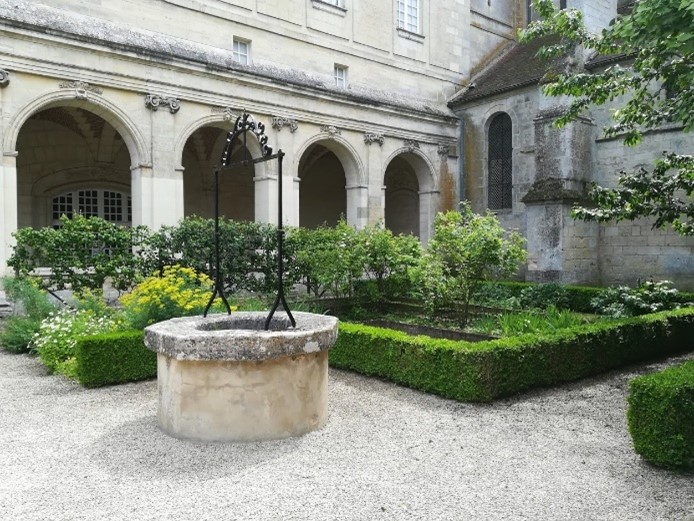Each month, a researcher shares their experiences of using a particular archive. The overall aim of this section is to create a database of the different archives available to those working on French and Francophone studies that will be of help particularly to students just starting out in research.
Antonio Marson Franchini is a D.Phil. candidate in Medieval History at Oxford University, focusing on medieval religious history. His dissertation aims to edit and study a model sermon collection created at the end of the thirteenth century in Paris by Friar Nicolas de Byard. Here he talks about his research at the bibliothèque municipale de Laon.

The bibliothèque municipale de Laon was established, like the majority of French libraries, during the Revolutionary period. The city of Laon, towering from its rocky hill in the otherwise flat Picardie became the natural place to house the confiscated collections of its many religious houses. The city was indeed part of a lively religious environment comprised of Cistercian, Benedictine and Premonstratensian abbeys. As a result, the collection comprises approximately 800 manuscripts, thousands of archival documents and printed materials which can be consulted by researchers and are the subjects of temporary exhibitions aimed at a broader public.
Since 1980, after a long period of renovation, the library collection has been housed in the Abbaye St. Martin, a Premonstratensian house founded in 1124. It sits at the easternmost point of the steep and rocky hilltop on which sits the city of Laon as I quickly discovered after my arrival at the train station on the northern side of the hill. Fellow researcher, do not take the long route to the abbey if your only means of transportation is your feet. Instead, enter the city directly and following the central Rue du Bourg you will find the abbey at the end of the street, near the Porte de Soissons. If you have any problems locating them, just call them and they will explain the fastest way to reach the library.
The abbey does not retain its medieval characteristics because it was renovated in the second half of the 18th century as the monumental spiral stairs and the small and quiet cloister demonstrate. The library is housed at the first floor and it is divided between the research and public library.
Unfortunately, the online catalogue covers only the modern materials therefore contacting the library beforehand is important to secure and prepare the materials that you intend to study. Furthermore, it is important to check the opening hours on their website. As with most French institutions, Monday is usually a rest-day and during the lunch break (12h-14h) you will be asked to leave the library.
By contacting them by mail, Dr Laurence Richard, the curator, will organise your study session by laying out the materials that you need and the complementing literature on the requested pieces. As many know there is always discussion as to whether is necessary to wear gloves to handle manuscripts. Laon library is a strictly gloves-only library and it offers a wide variety (cotton, latex, etc.) of gloves to match your personal preferences. Keep in mind that you are allowed to take photos of the material that you are examining, a good way to bring home some work!
The real treat is the assistance staff give to researchers. The help that Dr Richard offers in understanding the materials and gathering additional pieces is invaluable and usually found in smaller institutions like these. She will, for example, aid you in the identification and examination of a book binding. We had a good conversation and I felt compelled to ask more and more questions that only a specialist in the history of the library could have known the answers to.
I know that for some the lunch break could be a nuisance but I tried to make the most out of it and I received, from the library staff, some good advice on where to have lunch and sightsee some of Laon’s cultural patrimony. Give yourself a taste of the region at the Estaminet Saint Jean, located just on the main street, and head to the Cathedral which is definitely worth a visit.
Laon, bibliothèque municipale – http://biblio.ville-laon.fr/opacwebaloes/index.aspx?IdPage=1
Thank you very much for this, Antonio!


